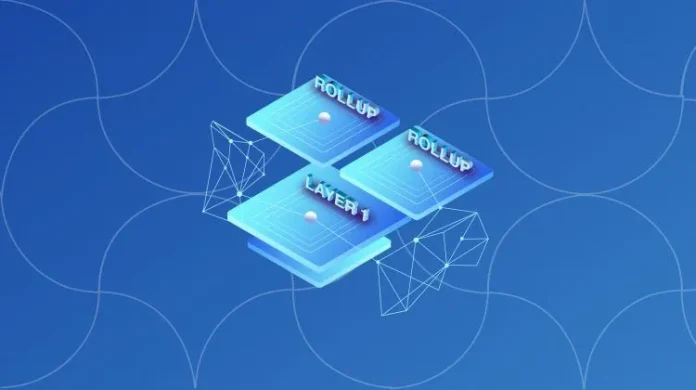In the fast-paced realm of blockchain technology, scalability has emerged as a paramount concern. As decentralized applications (dApps) gain traction, platforms like Ethereum face challenges in handling increased transaction volumes and maintaining efficiency. Enter Rollups Chains – an innovative solution designed to address the scalability bottleneck and unlock the full potential of decentralized ecosystems.
Understanding Rollups Chains:
Rollups Chains represent a Layer 2 scaling solution for blockchain networks, particularly Ethereum. They derive their name from the process of “rolling up” transactions from Layer 2 to Layer 1, the primary blockchain. The fundamental idea is to offload computational and transactional overhead to a secondary layer while preserving the security and decentralization of the main blockchain.
In the context of Ethereum, there are two main types of Rollups Chains:
- Optimistic Rollups:
- Optimistic Rollups operate on the principle of optimistic execution. They process transactions off-chain but submit them to the main Ethereum chain only if a dispute arises. This allows for faster and more scalable transaction processing on Layer 2 while maintaining the security and trustlessness of the Ethereum mainnet.
- ZK-Rollups (Zero-Knowledge Rollups):
- ZK-Rollups leverage advanced cryptographic techniques to compress transaction data and generate succinct proofs, providing a more efficient and scalable solution. These proofs are then submitted to the main Ethereum chain, reducing the computational load and transaction fees associated with on-chain operations.
The Power of Rollups Chains in Scaling Ethereum:
- Increased Throughput:
- Rollups Chains significantly increase the throughput of blockchain networks. By processing transactions off-chain and submitting only essential information to the mainnet, Rollups alleviate congestion, enabling more transactions to be handled simultaneously.
- Reduced Transaction Fees:
- With the computational burden shifted to Layer 2, transaction fees on the main blockchain can be substantially reduced. This makes decentralized applications more accessible and cost-effective for users, fostering broader adoption.
- Improved Scalability:
- Scalability is a key challenge for blockchain platforms, particularly Ethereum. Rollups Chains offer a scalable solution that allows these networks to accommodate a growing number of users and transactions without compromising speed or efficiency.
- Enhanced User Experience:
- Faster transaction processing and lower fees contribute to an improved user experience. Users can interact with dApps seamlessly, and developers can create more sophisticated applications without worrying about scalability constraints.
- Environmental Sustainability:
- The energy efficiency of Rollups Chains is noteworthy. By offloading computationally intensive processes to Layer 2, the environmental impact of transaction validation is reduced, making blockchain networks more sustainable.
Deploying and Utilizing Rollups Chains:
- Choose the Right Type:
- Depending on the specific requirements of a project, developers need to choose between Optimistic Rollups and ZK-Rollups. Each has its strengths and weaknesses, and the selection should align with the goals of the decentralized application.
- Smart Contract Compatibility:
- Ensure that the chosen Rollups solution is compatible with existing smart contracts. Transitioning from Layer 1 to Layer 2 should not compromise the functionality or security of smart contracts.
- Security Audits:
- Conduct thorough security audits to identify and address potential vulnerabilities in the Rollups implementation. This is crucial to maintain the integrity and trustlessness of the decentralized ecosystem.
- Community Engagement:
- Rollouts Chains often involve community consensus. Engage with stakeholders, developers, and users to gather feedback, address concerns, and ensure a smooth transition to Layer 2 scaling.
Challenges and Considerations:
While Rollups Chains hold immense promise, there are challenges and considerations that developers and stakeholders should be aware of:
- Ecosystem Adoption:
- Widespread adoption of Rollups Chains requires support from developers, dApp users, and the broader blockchain community. Education and awareness initiatives are crucial for successful integration.
- Interoperability:
- Ensuring interoperability between different Rollups implementations and Layer 1 is essential for a seamless and interconnected blockchain ecosystem.
- Regulatory Compliance:
- As blockchain technology evolves, regulatory frameworks may impact the implementation and operation of Rollups Chains. Stay informed and ensure compliance with relevant regulations.
The Future of Decentralized Scaling:
Rollups Chains represent a monumental leap forward in addressing the scalability challenges faced by blockchain platforms. As Ethereum and other networks embrace Layer 2 scaling solutions, the vision of a decentralized, scalable, and user-friendly future becomes more tangible. The ongoing development and adoption of Rollups Chains underscore the industry’s commitment to creating efficient, sustainable, and accessible blockchain ecosystems. With the potential to revolutionize how we interact with decentralized applications, Rollups Chains pave the way for a truly decentralized future.








